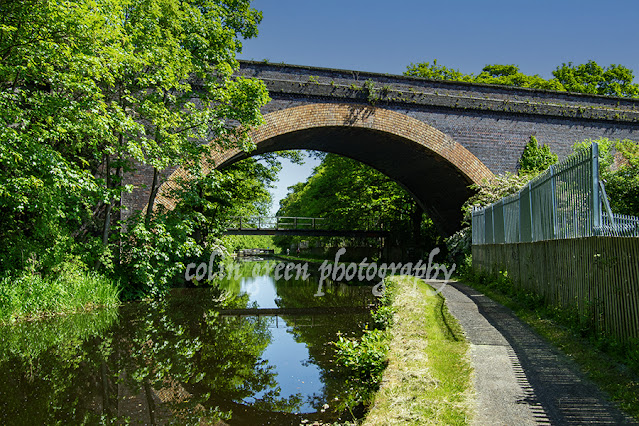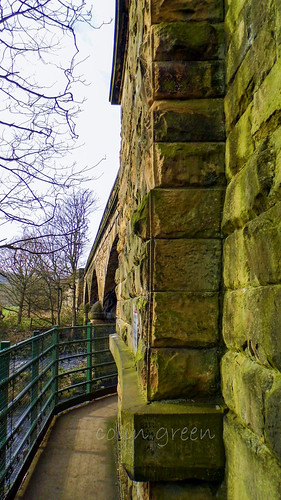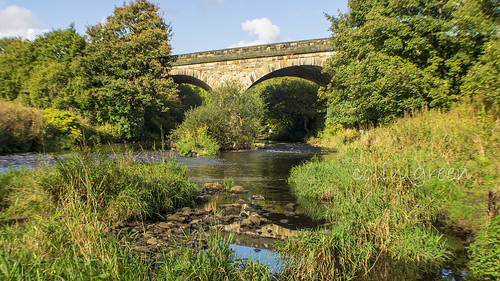Whitacre Mill Viaduct is a disused railway bridge crossing the Colne Valley at Deighton, Nr Huddersfield, built by the London & North Western Railway to carry the Kirkburton Branch Line, a 4 1/2 mile railway that had been intended to connect Huddersfield with the Barnsley coal mines, this scheme was never completed. Construction of the viaduct started in March 1865 by subcontractors Sigley, Miles and Haynes and the viaduct despite a partial collapse in February 1866 was completed prior to the lines opening on the 7th October 1867. The viaduct along with a short 1 mile section of the line from Deighton to ICI Chemical Works was the last to face closure, the majority having closed in 1965. This short section remained open until February 1971, before complete closure was decided in December that year.
The viaduct still crossers the Huddersfield Broad Canal, River Colne and Valley as a monument to a bygone age, it can be just about accessed from the Deighton side, but is largely overgrown and impassable on the opposite side of the structure, Kirklees Council have plans to reopen the crossing as a greenway similar to the nearby Bradley Viaduct but as yet those plans have not progressed.
The pictures below were taken on the 27th May 2023 with a Nikon d3300.






%20Railway%20Bridge%201%20copy.jpg)
%20Railway%20Bridge%202%20copy.jpg)
%20Railway%20Bridge%203%20copy.jpg)
%20Railway%20Bridge.jpg)
%20Railway%20Bridge%20copy.jpg)
%20Railway%20Bridge%201%20copy.jpg)
%20Railway%20Bridge%201%20copy.jpg)
%20Railway%20Bridge%20copy.jpg)







































